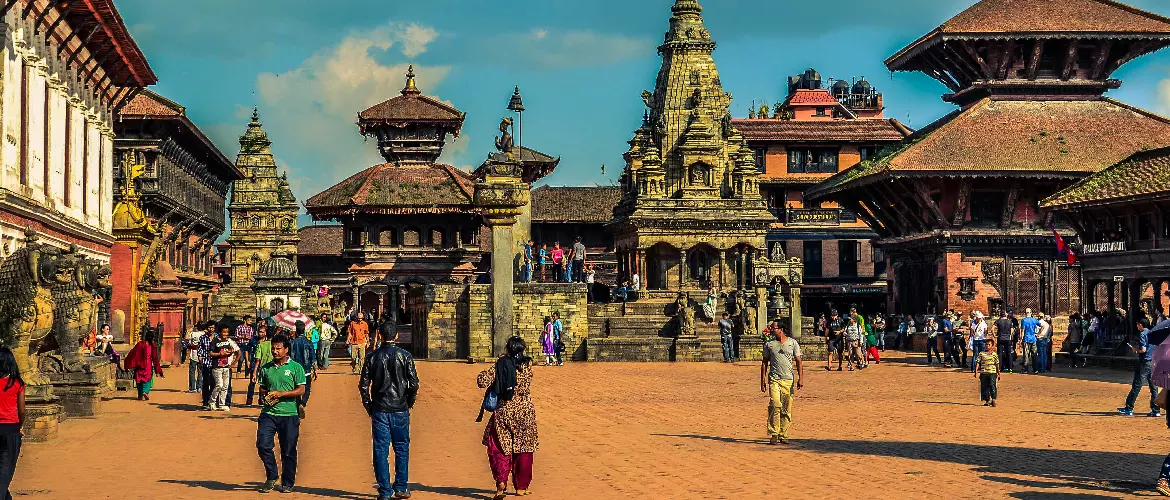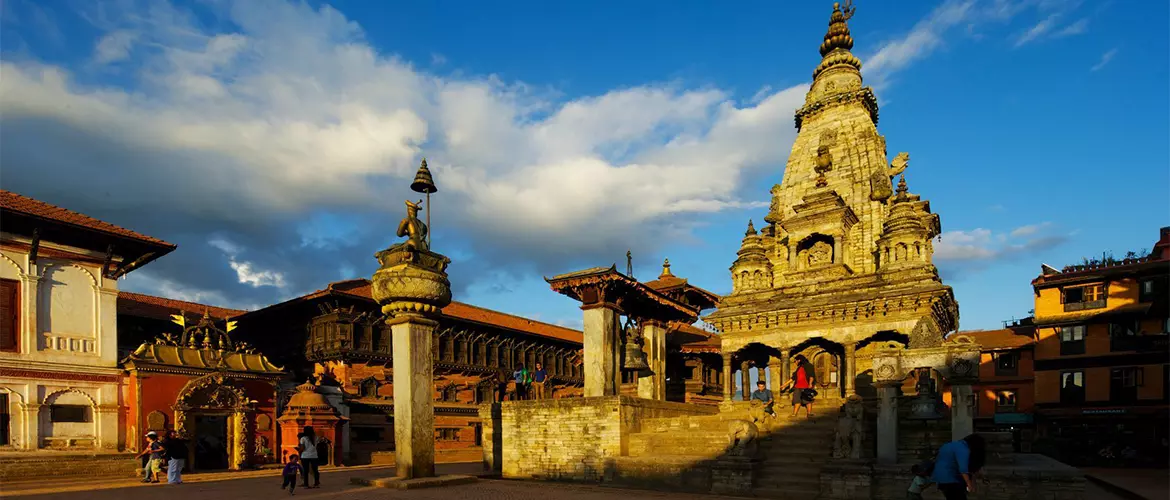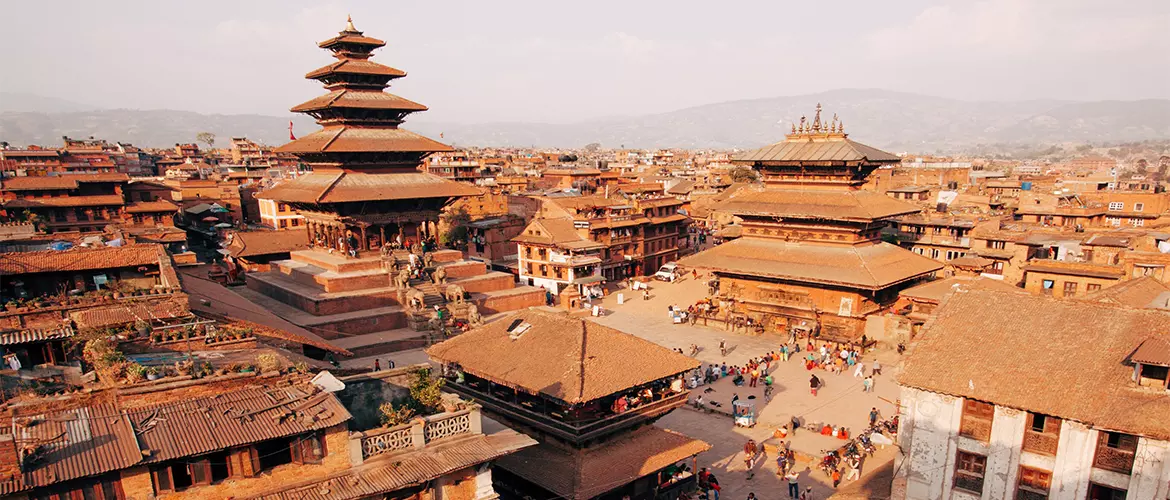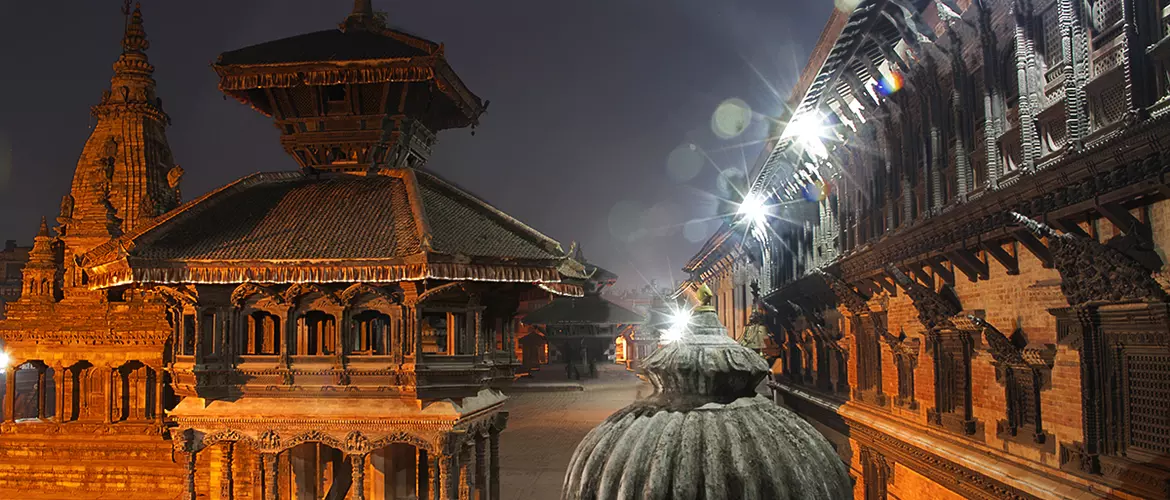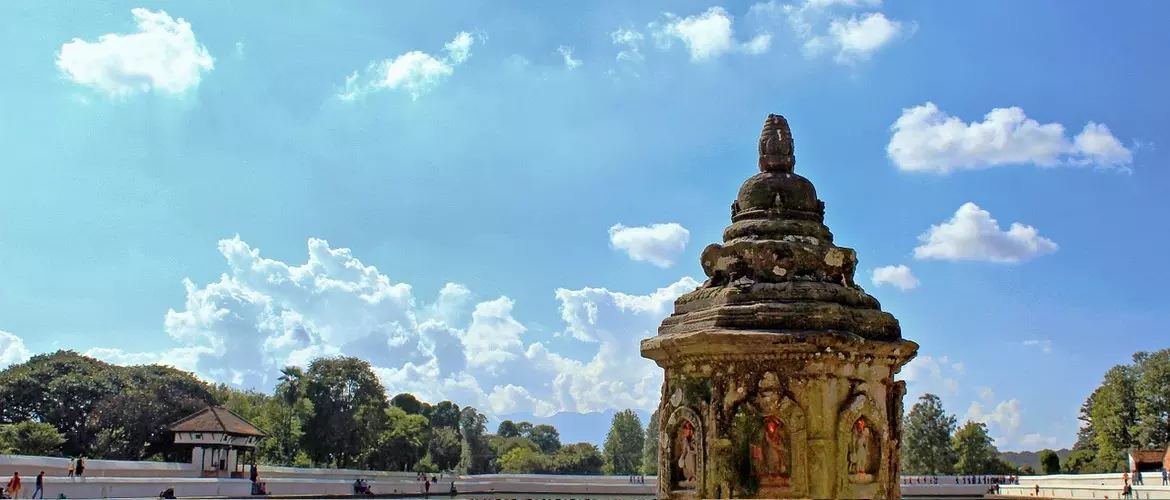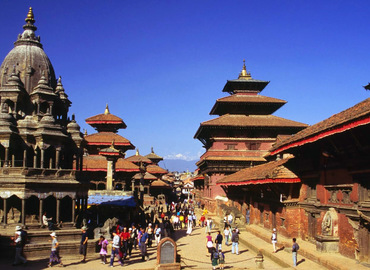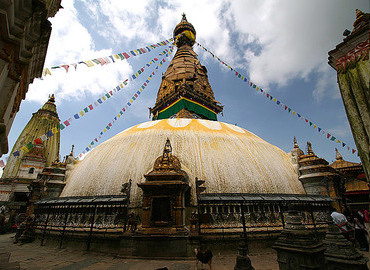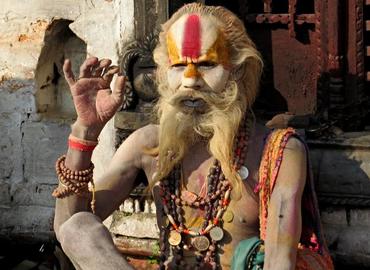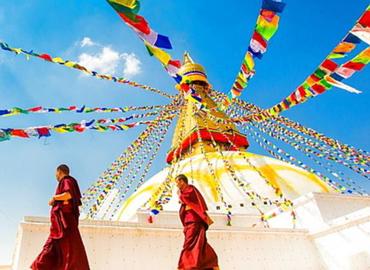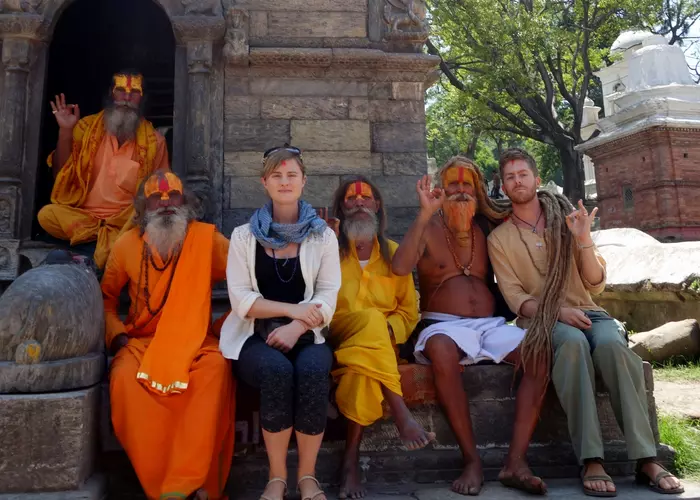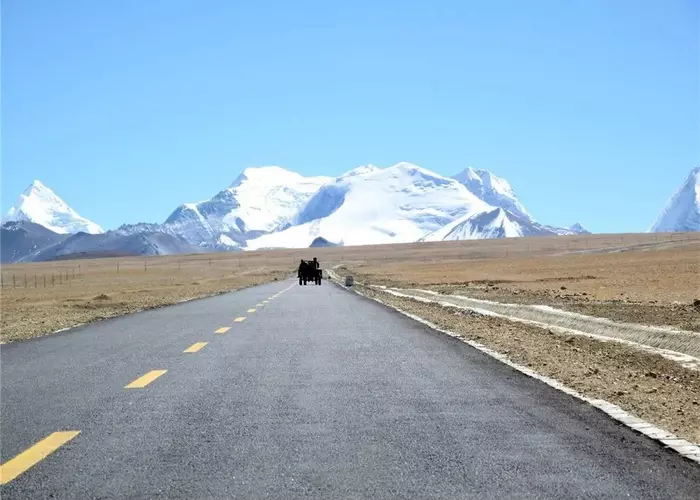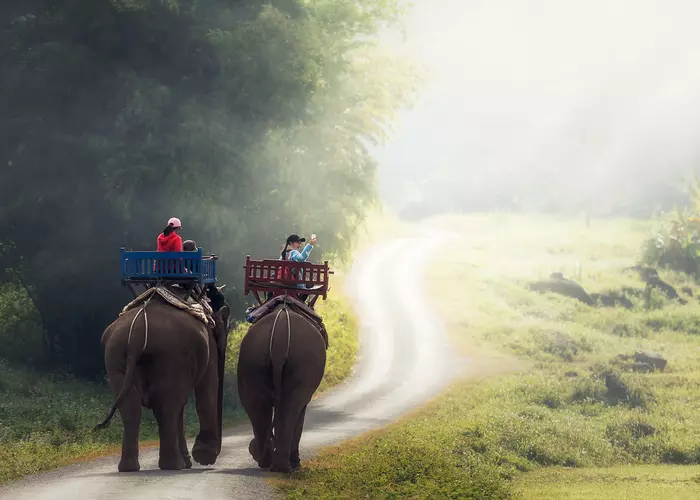Bhaktapur Durbar Square is located in the ancient city of Bhaktapur, about 14 kilometers east of Kathmandu, Nepal. It was listed as a World Cultural Heritage by UNESCO in 1979. Durbar Square is located in the center of the ancient city of Bhaktapur. Bhaktapur has a population of about 100,000 and is one of the three main cities and the most densely populated city in Nepal. The name "Bhaktapur" in Sanskrit means "City of Devotees," and it is a major pilgrimage site for both Hindus and Buddhists.
Bhaktapur, built in the 12th century by the Malla kings, was the capital of the Malla Dynasty and the birthplace of medieval Nepalese architecture and art. As the largest square in Bhaktapur, Bhaktapur Durbar Square includes the Malla Dynasty’s royal palace, as well as many unique temples, shrines, stupas, and statues. This is why it is often called an "open-air museum." Whether you're a history lover, architecture enthusiast, or cultural explorer, it’s a must-visit place in Nepal. In 1929, E.A. Powell wrote in The Last Home of Mystery that "Were there nothing else in Nepal, save the Durbar Square of Bhatgun/Bhaktapur, it would still be amply worth making a journey halfway round the globe to see."
In History
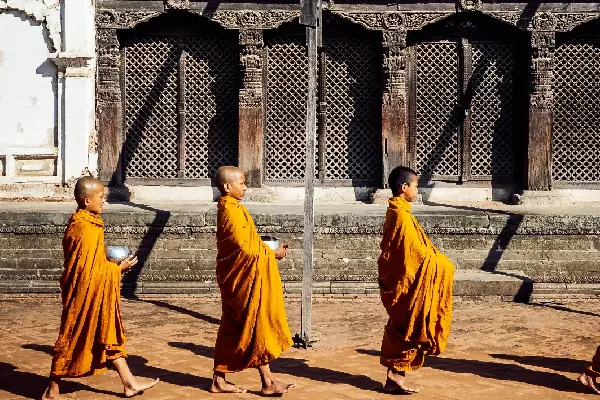
Bhaktapur has witnessed over 500 years of the rise and fall of the Malla Dynasty. The Malla dynasty was established in the early 13th century, and "Malla" means "wrestler" in Nepali. It is said that the king of Nepal at the time liked wrestling. One day, when he heard of his son's birth while wrestling, so he added "Malla" to his son's name. From then on, all subsequent kings followed the same tradition.
Historically, Bhaktapur, along with Kathmandu and Patan, was one of three independent kingdoms. However, after the death of the sixth-generation king, the three heirs of the kingdom fought against each other for control of the trade routes to Tibet. They invested a lot of money in building these palaces and squares. These squares witnessed the grandeur of Newar classical temple architecture and palaces from the 15th to the 18th century.
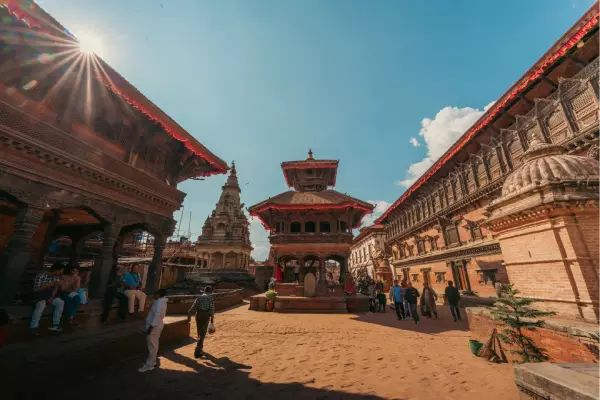
Bhaktapur Durbar Square was built between the 14th and 16th centuries and exudes a strong medieval atmosphere. Bhaktapur was the most powerful among the three Malla kingdoms and remains the best-preserved ancient city in the Kathmandu Valley. At its peak, Bhaktapur Durbar Square featured an impressive scale, with 99 palace courtyards, 172 temples, and 172 rest houses for pilgrims.
On April 25, 2015, Nepal was struck by a devastating 8.1-magnitude earthquake, causing severe damage to Bhaktapur Durbar Square. The Vatsala Durga Temple completely collapsed, while the tops of the Shiva Temple and the Fasidega Temple were also damaged, requiring large-scale restoration. Only 15 of the original 99 courtyards remain today. Nowadays, the Durbar Square has since been restored, bringing back much of their historical charm. Despite the past destruction, Durbar Square remains a must-visit destination in Nepal. Despite this, Durbar Square remains a must-visit destination in Nepal.
Main Attractions
Bhaktapur Durbar Square is the largest of the three Durbar Squares in Nepal, surrounded by a dazzling array of temples and stupas. It houses the 55 Window Palace, Golden Gate, etc, known as the "essence and treasure of medieval Nepalese art." This area is known as Bhaktapur Durbar Square as an entirety, while it consists of four squares - Durbar Square, Taumadhi Square, Dattatreya Square and Pottery Square. Numerous ancient shrines, temples and heritage sites attract thousands of travelers all over the world to pay a visit.
55 Window Palace
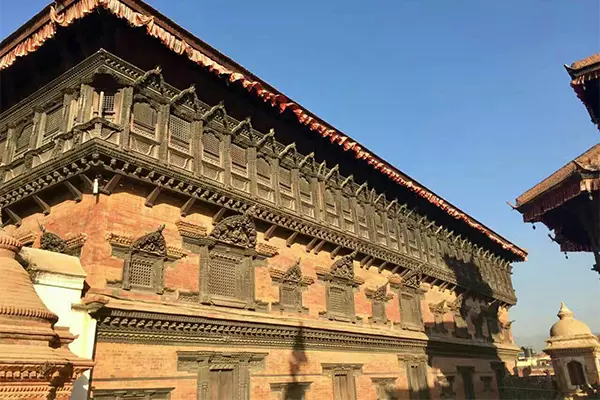
It was built in 1427, under the order of King Yakshya Malla of the Bhaktapur Malla Dynasty. This palace is one of the most famous attractions here. It was once the king’s harem and is renowned for its brick red walls and intricately carved black wooden doors and windows, showing the Newar architectural style of Nepal. The palace gets its name from the 55 black lacquered sandalwood windows. They are adorned with gemstones and elaborate carvings, reflecting the exquisite wood craftsmanship of medieval Nepal.
At the center of the palace courtyard lies the royal bathing pool, Naga Pokhari. The pool is decorated with numerous snake sculptures, including a grand serpent pillar rising from the center. The edges of the pool feature large serpent heads. In Hindu mythology, the cobra-shaped Naga is regarded as the god of water, fertility, and prosperity. Both India and Nepal have many temples dedicated to serpent deities.
Golden Gate
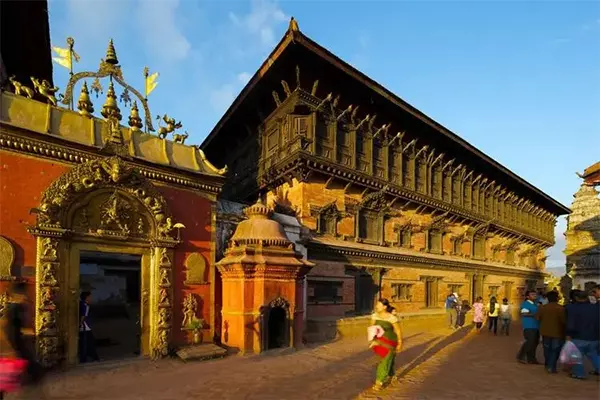
The Golden Gate, also known as the Sun Gate, was built in 1754 by King Jaya Ranjit Malla. This former royal palace entrance is an outstanding example of Nepalese copper sculpture art. The Golden Gate is the entrance to the courtyard of 55 Window Palace and stands 8 meters tall. At the top of the gate is a statue of Taleju Bhawani Goddess, the protector deity of the Nepalese royal family, with a pagoda-style roof above. The top features Nepal's unique non-rectangular national flag. The gate frame, lintel, and decorations are made of gilded copper, with exquisite carvings that are both magnificent and luxurious. Armed soldiers stand guard at the Golden Gate, and all Hindu pilgrims must remove their leather items and shoes before entering the temple to worship. In front of the Golden Gate stands a statue of King Bhupatindra Malla.
Nyatapola Temple
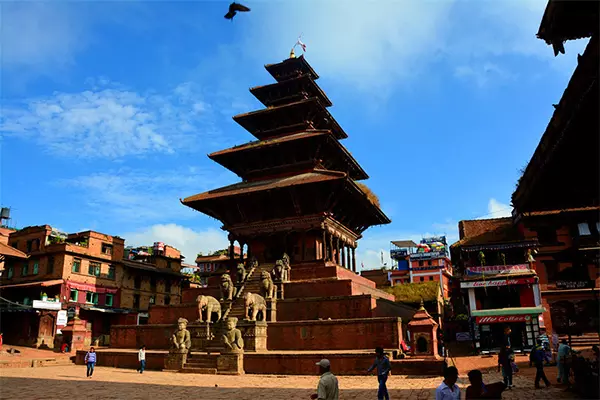
Built in 1702, the Nyatapola Temple is one of Bhaktapur’s most iconic landmarks in the center. Standing about 30 meters tall, it is a five-tiered pagoda-style temple. Dedicated to the goddess Siddhi Lakshmi, the temple is a masterpiece of Newar architecture. Its stone staircase is guarded by five pairs of statues in ascending order: legendary strongmen (Rajput warriors), elephants, lions, griffin-like creatures, and finally, the lion-headed goddess Singhini and the tiger-headed goddess Baghini. It is said that the power of each statue is ten times stronger than the one below it. The temple is supported by 108 wooden struts, each carved with incarnations of the goddess Siddhi Lakshmi in different forms. Visitors can climb the stone steps to the top for a panoramic view of the square.
Vatsala Durga Temple
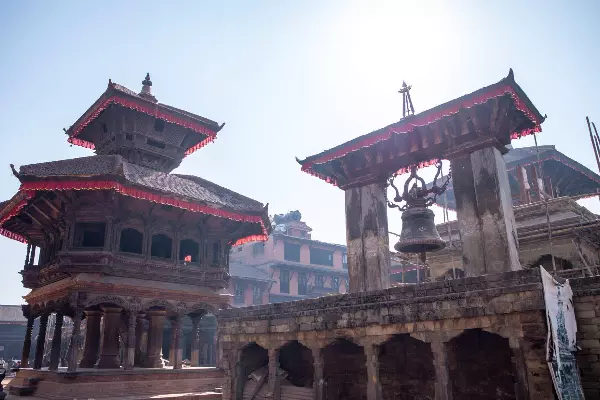
The Vatsala Durga Temple is a beautifully crafted stone Hindu temple, which is located east of the 55 Window Palace. Built in 1737 by a Malla king, it is known for its intricate design. In front of the temple hangs a large bronze bell, the Taleju Bell, also built in 1736 by King Jaya Ranjit Malla. It is said to be the largest bronze bell in Kathmandu. It is said that the bell is rung every morning during the worship of the goddess Taleju. Locals call it the "Barking Bell" because the sound of the bell often sets off a chorus of barking from nearby dogs.
Taleju Temple
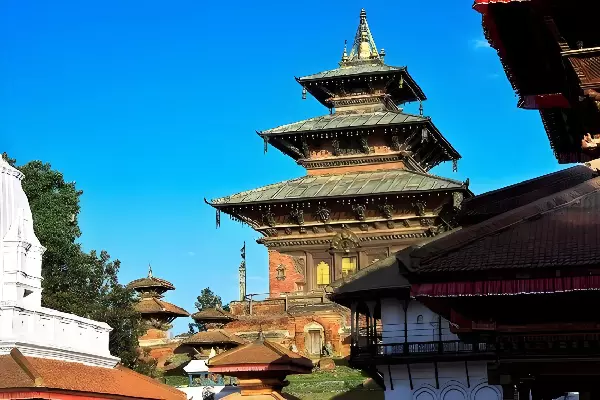
Built in 1553, Taleju Temple is the oldest structure in this area. Non-Hindus are not allowed to enter, and taking photos is strictly prohibited. There are soldiers guarding the temple at the entrance. The temple’s wooden carvings on the doors are incredibly intricate, though unfortunately, they cannot be photographed. Through the gate, visitors can glimpse a large courtyard in the traditional quadrangle style. The temple is dedicated to Goddess Taleju Bhawani, the guardian deity of the Malla Dynasty, also known as the Living Goddess.
Peacock Window
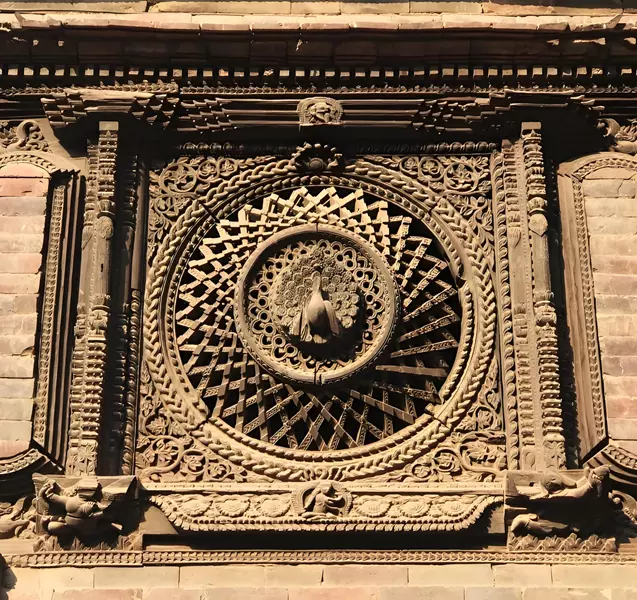
The Peacock Window is in a small alley located at Dattatraya Square, which is marked by a sign, making it easy to find. It consists of several small bird carvings around, with a large intricately decorated peacock carving in the center with tail feathers that form a lattice window. It’s commonly referred to as the "Mona Lisa" of Nepal and is one of the most precious artworks of Nepal. The intricately carved peacock in full display has become one of the most iconic representations of Nepalese woodcraft.
Travel Tips
- Entrance Fee: Foreign tourists are charged 1,800 NPR (approximately USD10-12). Visitors from South Asian countries (such as India, Pakistan, Bangladesh) and China typically pay 500 NPR.
- Transportation: It’s easy to get to Bhaktapur from Kathmandu. The city is 14 km away, with regular buses and taxis available. Buses depart frequently from the Bhaktapur Bus Park in Kathmandu, taking about 1 hour and 15 minutes, with fares around 40-50 NPR. Alternatively, a taxi ride takes 40 minutes to an hour, costing between 700 and 1,100 NPR.
- Local Crafts: Bhaktapur's streets are home to many artisans creating pottery, wood carvings, and Thangka paintings using traditional techniques. Visiting their workshops offers insight into their craftsmanship, and you can purchase and experience unique handmade souvenirs.
- Pottery Square: You can witness Nepal’s ancient pottery-making techniques here. Despite modernization, this tradition continues to thrive, preserving a vital part of Nepalese heritage.
- Festivals: Bhaktapur Durbar Square is a key venue for Nepalese festivals, especially Biska Jatra Festival and Gai Jatra Festival, which attract thousands of locals and tourists.
Conclusion
Bhaktapur Durbar Square is not just a gateway to Nepal’s history and culture but also a vibrant center for traditional crafts and festivals. Whether you're a history buff, cultural explorer, or architecture enthusiast, it’s a must-visit destination. Including Bhaktapur Durbar Square in your Nepal itinerary will allow you to personally experience its unique charm and feel the timeless essence of this ancient city.
Kathmandu - Nagarkot - Kathmandu
Visit the UNESCO world cultural heritages in Kathmandu Valley and view the sunrise of the Himalayas at Nagarkot.
Lhasa-Shigatse-EBC-Gyirong-Kathmandu-Chitwan-Kathmandu
Step into the pure lands and enjoy the fascinating natural and cultural beauty of Tibet and Nepal.
Kathmandu - Pokhara - Chitwan - Nagarkot - Bhaktapur - Kathmandu
Golden Triangle tour with Kathmandu, Pokhara, and Chitwan. Balance the visiting of sacred sites and outdoor activities.
Email response within 0.5~24 hours.


